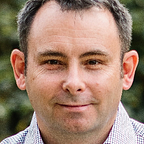How I Reversed My Diabetes Using New Technology and Data Science
Data Science and Statistics can drive highly personalized medical intervention
Early in 2021, I was diagnosed with Type 2 Diabetes. After a blood test, my HbA1c — a measure of average blood sugar levels over the past three months — came back as 49 (6.6 in the US metric). In the UK, a HbA1C level of 41 (5.9) or below is considered healthy, 42–47 (6.0–6.4) is considered ‘at risk of Type 2 diabetes’, and 48 (6.5) or above is considered diabetic. The diagnosis did not surprise me — there was a reason I had asked to be tested. I had been doing at home prick tests on and off, I have a sedentary job, I was overweight and I have a family history of T2 diabetes.
Granted, this result was just barely into the diabetic zone, but any formal diagnosis of diabetes is a wake up call, and I was glad to catch it early. Without action, it’s only going to get worse. So I was faced with a choice: act now, or sign up for a future of chronic disease management with medication and a likelihood of worsening health problems.
Today I’m no longer diabetic. I have a healthy HbA1c of 38 (5.6). I’m fitter and I’m in a healthy weight range having lost 10% of my body weight.
